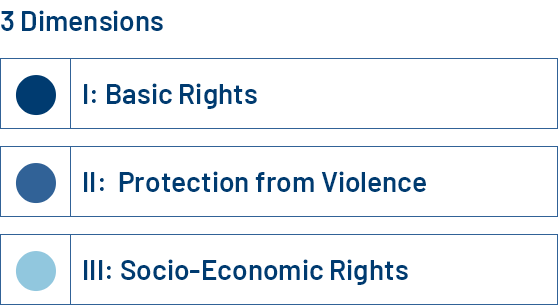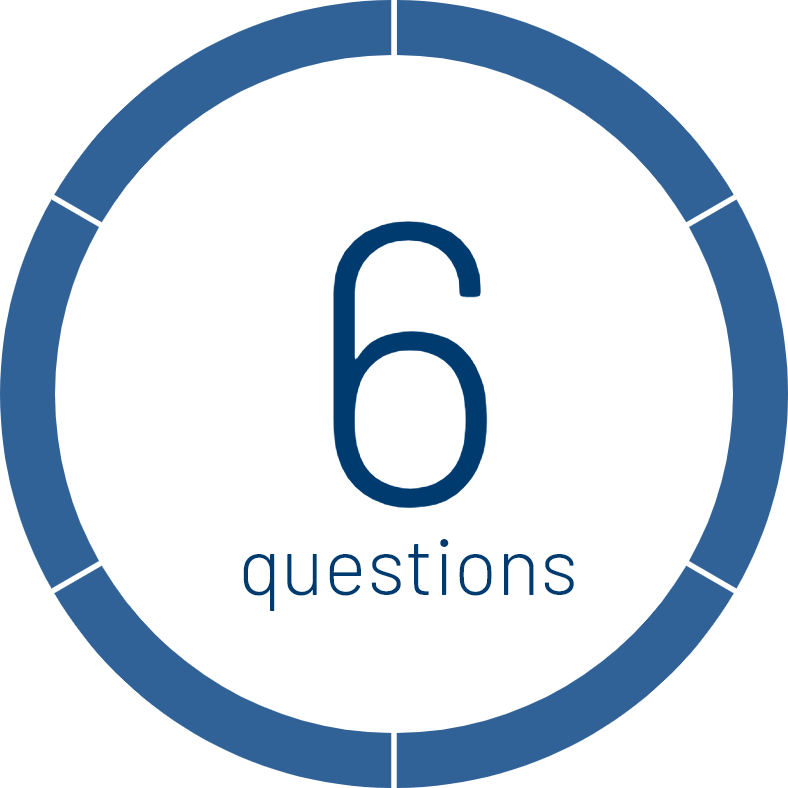Methodology
Democracy cannot thrive unless the human rights of all its citizens are protected, including minorities that are often scapegoated, “othered” or targeted because of their sexual orientation, gender identity and expression, and sex characteristics.
The LGBTQI+ Human Rights Report Cards are an extension of the 2021 Summit for Democracy and the F&M Global Barometers LGBTQI+ Perception Index is an outgrowth of the first Human Rights Report Cards. The Report Cards measure states’ legislative protections whereas the Perception Index documents the lived realities of LGBTQI+ people. The two projects complement one another: the first documents human rights protection, and the second demonstrates the actual human rights climate.
The human rights benchmarks that we utilize are based on universally recognized principles from the Universal Declaration of Human Rights and the Yogyakarta Principles.
LGBTQI Human Rights Report Cards


A comprehensive measurement of the extent to which states are human rights protective or persecuting toward LGBTQI+ people. The report cards consist of 30 items that measure concerns specific to Lesbian, Gay, Bisexual, Transgender, Intersex, and non-binary individuals.
Each country is assessed on its Basic Rights, Protection from Violence and Socio-economic Rights. Items are weighed equally and scored on a binary scale, assigned a “1” or “0” based on a country’s positive or negative performance on each item. To receive credit, protections must be secured at the national level; partial protections in a limited number of states, cities, or sub-national jurisdictions will not receive credit. Based on their performance, countries are then awarded a grade on a 5-point scale: Excellent, Good, Fair, Poor, and Failing. The binary scale enables consistent comparison between countries on a broad scale.
The above process allows for in-depth analysis of a country’s legal protections for LGBTQI+ minorities but also its protections in practice.
Grading Scale
The grading scale with categories of Excellent, Good, Fair, Poor and Failing provides an opportunity to compare state legislative protections.
Dimension 1 represents fundamental freedoms that the state must provide for all citizens. These freedoms include the ability to self-identify, the right to assemble, and freedom from state-sanctioned harm.
No criminalization of sexual orientation
No criminalization of gender identity or expression
Freedom from arbitrary arrest based on sexual orientation
Freedom from arbitrary arrest based on gender identity
Legal recognition of gender identity
No physiological alteration requirement for legal gender recognition
No psychological diagnosis requirement for legal gender recognition
LGBTQI organizations are allowed to legally register
LGBTQI organizations are able to peacefully and safely assemble
Security forces provide protection to LGBTQI pride participants
Dimension 2 measures physical and mental safety and encapsulates the state’s active protection of its LGBTQI+ citizens from harm from others.
Ban on gay conversion therapy
Hate crimes legislation includes sexual orientation
Hate crimes legislation includes gender identity
Hate crimes legislation includes sex characteristics
Hate speech laws include sexual orientation
Hate speech laws include gender identity
Equality body mandate exists
Prohibition of medically-unnecessary non-consensual medical interventions on intersex individuals
Gender affirming prison accommodations
Asylum for LGBTQI individuals is available within the country
Dimension 3 gauges the ability of LGBTQI+ citizens to participate as full and equal citizens so that they may prosper and thrive.
Workplace non-discrimination laws include sexual orientation
Workplace non-discrimination laws include gender identity
Workplace non-discrimination laws include sex characteristics
Fair housing non-discrimination laws include sexual orientation
Fair housing non-discrimination laws include gender identity
Head of state supports marriage equality
State allows for marriage equality
State prohibits discrimination in healthcare based on sexual orientation
State prohibits discrimination in health care based on gender identity
Legal classifications (such as an X sex or gender marker) are universally available
F&M Global Barometers LGBTQI+ Perception Index

166076
Current Total Responses
A groundbreaking global survey which documents the lived realities and perceptions of LGBTQI+ people. Going beyond mere measurement of legislative protections, the Perception Index gives voice to LGBTQI+ people worldwide. The survey, available in four languages, focuses on safety, acceptance, and level of discrimination.
-
During the past 12 months, on a scale of 1 to 5, where 1 means “not at all safe” and 5 means “very safe,” how safe do you feel living as an L, G, B, T or I person in your country?
-
During the past 12 months, on a scale of 1 to 5, where 1 means “not at all accepted” and 5 means “fully accepted,” how accepted do you feel as an LGBTI person by your society?
-
During the past 12 months, on a scale of 1 to 5, where 1 means “very fearful” and 5 means “not at all fearful,” how fearful are you of being arrested, harassed or blackmailed by security forces/police because of your sexual orientation, gender identity, or intersex status?
-
During the past 12 months, on a scale of 1 to 5, where 1 means “very likely” and 5 means “not at all likely,” how likely are you to be a victim of violence due to your sexual orientation, gender identity or inter-sex status?
-
On a scale of 1 to 5, where 1 means “not at all safe” and 5 means “very safe,” how safe do you feel gathering with other LGBTI people in public?
-
During the past 12 months, on a scale of 1 to 5 where 1 means “all of the time” and 5 means “never,” how frequently do you experience discrimination in your day-to-day life due to your LGBTI status?
Grading Scale
The survey provides insight into the actual human rights climate experienced by LGBTQI+ individuals. Consequently, the surveys are graded on a scale from negative to positive.